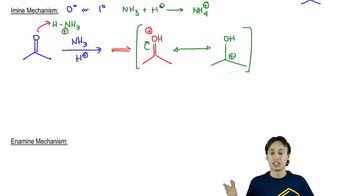Show how you would use appropriate acyl chlorides and amines to synthesize the following amides.
(a) N,N-dimethylacetamide
(b) acetanilide (PhNHCOCH3)

 Verified step by step guidance
Verified step by step guidance Verified video answer for a similar problem:
Verified video answer for a similar problem:



 9:32m
9:32mMaster NAS - The Three Rules with a bite sized video explanation from Johnny
Start learning